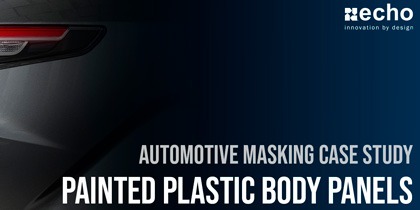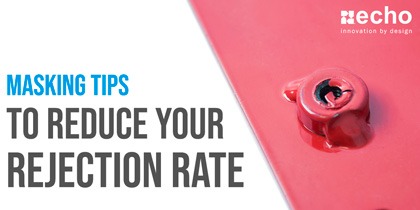Purchaser's Guide for Buying Industrial Masking Supplies
-

- Jun 29, 2020

If you're a purchaser, your coworkers most likely underestimate the number of factors you calculate into every single one of your purchases. MRO supplies are no different. When it comes to purchasing industrial masking supplies there is a wide array of items that you need to factor in. We developed this post to provide you a comprehensive breakdown of the factors to make you better equipped to make a final purchasing decision, negotiate pricing, and justify investing in custom solutions.
In this post we will cover the following:
- Catalog vs. Custom Molded Masking
- Tooling & Manufacturing
- Prototyping
- Material Costs
- Tariffs
- Masking Tapes vs. Die-Cuts
Breakdown of Purchasing Rubber Molded Masking
Custom Molded Masking
Custom molded masking solutions are engineered components, typically made with silicone or EPDM, often manufactured using a process called compression molding. These solutions are used when a catalog option doesn't meet a customer's specific needs or requirements
Industrial coaters with high production output typically use custom-molded masks as a way of speeding up their installation and removal processes. While custom masking may take more time than simply shipping catalog masking, it is one of the more effective solutions at cutting overhead costs by drastically lowering time spent on installation & removal, as well as reducing secondary ops and decreasing your reject rates.
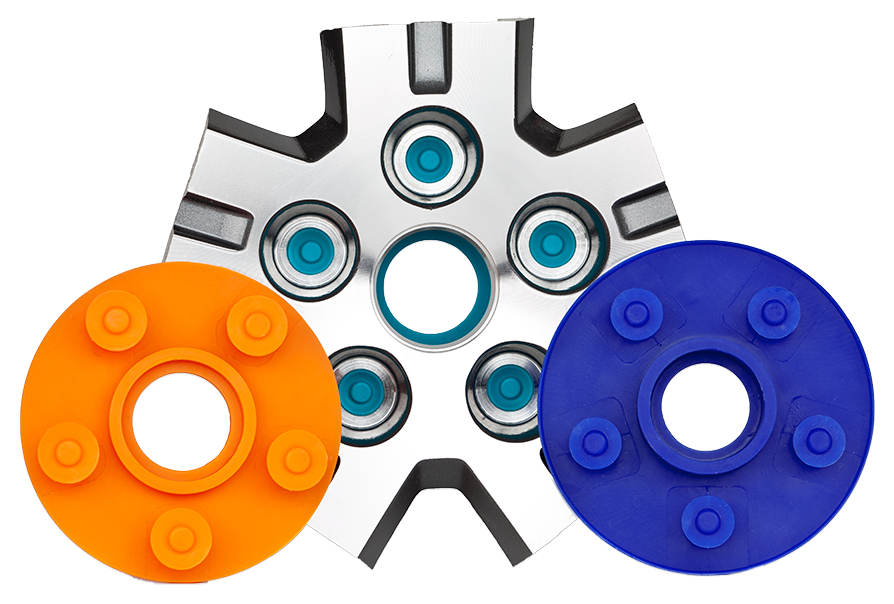

Material
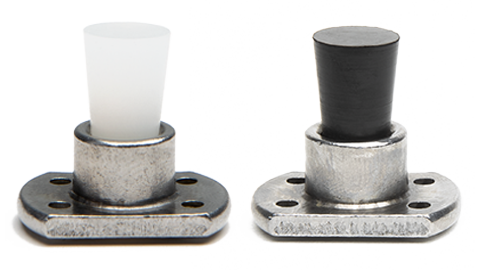

Silicone & EPDM will be the two primary materials you'll be choosing from. These materials will be roughly the same price per gram.
Outside of your process restrictions and chemical resistance requirements, a key deciding factor here comes from reuse. Silicone can typically be reused 5-20+ times, depending on the harshness of your coating process. EPDM, on the other hand, may give you 3-5 uses before having to throw away.
Tooling
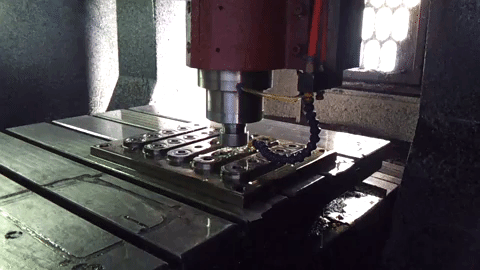

Compression molding tools are typically made with either steel or aluminum depending on the EAU (estimated annual usage) and time frame.
Investing in tooling can be a stressful decision. Because of this, we put more details below so that you can make a more well-informed decision in order to justify the expense when it is appropriate.
EAU (Estimated Annual Usage)
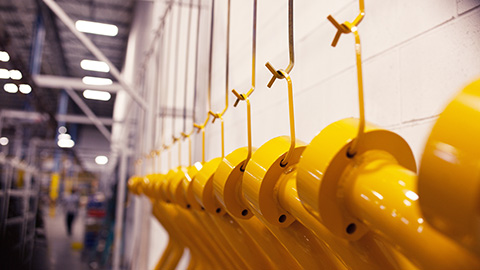

As a purchaser, you already know that a higher part usage requirement almost always means you'll be able to get bulk pricing discounts.
Most masking suppliers offer percentage off their catalog parts if you were to purchase a case of their products versus just 1-5 bags/rolls of the product. So, factor this in. Don't try purchasing one-offs all the time. This especially important when shipping charges factored in as well!
Tooling and Manufacturing Elements Factored into Custom Masking Pricing
Molding custom masking parts isn't as simple as printing a photo on your printer. At least not yet. Most custom masking components require a compression molding tool, which usually runs the customer between $1,000 - $1,500 (domestic pricing will be roughly 2x-4x that price). But, that's not always the case. There are several factors that go into calculating the price that most people don't see. These include:
- Part complexity: This is a big deal when it comes to demolding a part. The harder it is to de-mold cap or plug from the tool, the longer it will take to make the quantity requested, resulting in a higher price. It also plays a factor in tooling costs, as more complex parts require more completed tools. A more complex part will have a tool that is almost double in cost
- Labor: Compression-molded parts typically require secondary ops, such as trimming excess flash.
- Tariffs: The United States Trade Representative imposed a 25% tariff on Section 301 – List 3 items on 5/10/2019. This has resulted in some price increasing move downstream to you. Because of this, companies, like Echo, have started offering molding services in-house & Malaysia
- Part Size & EAU: Typically, the lower your EAU (and part size), the lower the cavitation on the tool. For example, a tool for a 1.1 gram plug with an EAU of 150k will have cavitation of around 36, while a tool for a 3.5 gram plug with an EAU of 1500 will have cavitation of around 8. The price difference between the two is not huge, only a couple hundred dollars (typically)
- Tooling Metal: Compression molding tools are made from either aluminum or steel. Aluminum is much easier to machine and lighter in weight (making it easier to handle). Because of this, its initial price is lower than a steel mold. The drawback here is that it lasts only a fraction of the time that a durable steel mold will last. Steel may take longer to heat up, but it also keeps heat longer (great for continuous opening and closing of the mold). Aluminum, on the other hand, heats quicker but cools faster. So, when choosing a mold, if you're EAU is low or you're just wanting to prototype parts, aluminum is the way to go. If you have a higher EAU and have plans for multiple production runs, steel will be the go-to option.
Advancements In High-Temp Masking Prototypes
Traditionally, when a powder coater wanted to put a masking part through their process to test out and validate, it would take 4-6 weeks + tooling costs ($1,000 - $2,000) + additional costs if you needed to expedite it.
Now, companies like Echo have developed a proprietary rapid prototyping process that is able to get high-temperature silicone prototypes in-hand within 1 week, at a pricing range of around $200 - $400. This is a huge deal, not only for purchasers, but also for your finishing line, as they're going to be able to dial in the mask to eliminate secondary ops, minimize installation/removal times, and reduce repetitive motion-related injuries!
Calculating Cost Savings to Validate Custom Masking
- Silicone reuse: Take your EAU divided by at least 5 (Possibly 10 to 20 if your team does well with cleaning plugs)
- Labor: Calculate extra time spent on installation and removal (average time spent on installation and removal per piece * employee pay rate)
- Rework Rate: Factor in reject rate costs (if you have a reject rate of 10%, a well-engineered masking component should take it down to anywhere between 0% - 2%
To give you a better idea of what this looks like in a use case, below is what a cost-savings study would look like based on time spent masking using tape vs. a custom-molded mask.
| Using Masking Tape | Using Custom Molded Masking | |
| Parts Needing Coated | 20,000 | 20,000 |
| Time Spent Masking per Part + Secondary ops | 7 Minutes | 1 Minute |
| Total Time Spent | 2333 Hours | 333 Hours |
| Average Hour Rate / Employee | $14.00 | $14.00 |
| Total Additional Labor Costs | $33,600 | $4,662 |
| Tooling | $0 | $1,500 |
| Masking Parts Costs | $750 | $2,000 |
| Plus Reject Rate Costs | $1,250 | $250 |
| Total Cost | $35,600 | $8,412 |
Savings of $27,188
Catalog Molded Masking
Catalog molded masking parts are stock products developed to mask off surfaces, threaded holes, bolts, studs, and a variety of other components during industrial coating processes, like powder coating, e-coating, plating, and anodizing.
The most commonly used rubber masking solutions are silicone caps, tapered plugs, pull plugs. But there are also a variety of other caps and plugs used to masking off threaded and non-threaded surfaces.
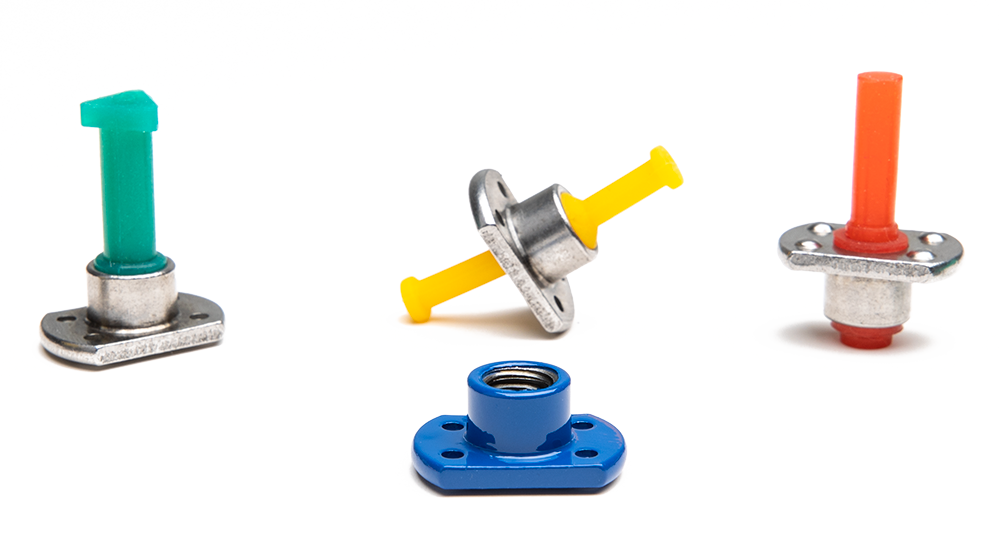

Choosing Between Catalog & Custom Molded Masking
When you're exploring whether you need to purchase catalog masking products versus requesting a quote for custom masking, it's more than likely going to come down to timing and your EAU. Below we've listed out a few reasons why you'd choose one over the other
When to Stick With Catalog Masking
- If a catalog part works, then you should absolutely stick with catalog masking
- You're in a rush and can't wait for a custom mask to be designed, tooled, validated, and shipped
- Low-production runs / Low EAU
When to Switch to Custom Masking
- You have a high-volume production run
- You have a part that is difficult to mask using catalog options
- You're dealing with a lot of quality issues
- You want to eliminate secondary ops
- You want to minimize your installations and removal times
- You want to reduce/prevent repetitive motion industries
Purchasing Masking Tapes & Die-Cuts
The other option coaters go with for masking off surfaces are high-temperature tapes and die-cuts. In this section we'll breakdown the difference between the two, what it takes to make a custom die-cut, a price comparison of each material, and what the total overall costs will look like if you decide to go this route.
Custom Die-Cut Masking Tape Pricing Breakdown
Custom die-cut masking tape is a method of custom engineering and cutting pressure-sensitive adhesive tape for a specific surface area's geometry. This is a quick and easy way metal coaters are able to lower overall costs and speed up production, as using traditional rolls of tapes can take 5-30 minutes to apply and precisely cut with an X-Acto knife to what you're needing to mask off.
Custom die-cuts do require either a rotary tool (shown in the gif) or an overhead tool. The average cost of a rotary tool is around $375, while the average of an overhead tool will range around $450-$600. The complexity of the tool and the material needed for the tool is going to be the main driving factors towards the tool's cost.
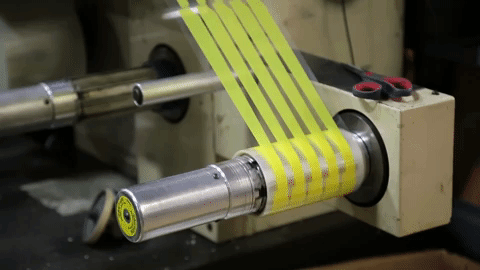

Catalog Masking Tapes
Catalog masking tapes are stock products made by combining a liner with pressure-sensitive adhesive. They're available in a variety of different widths, and most of them stretch to 72 yds in length. HIgh-temperature tapes are a great option for small job shop powder coaters, as they can be placed and cut to specific applications. The major drawback of using only rolls of tape is the sheer amount of time some coaters have to spend masking each part they coat.


When it comes to purchasing catalog rolls of masking tape and negotiatiing price, it really only comes down to two factors: Material selection & bulk pricing discounts.
Price Comparison of 2" High Temperature Tapes
2" Tape Price Comparison by Material
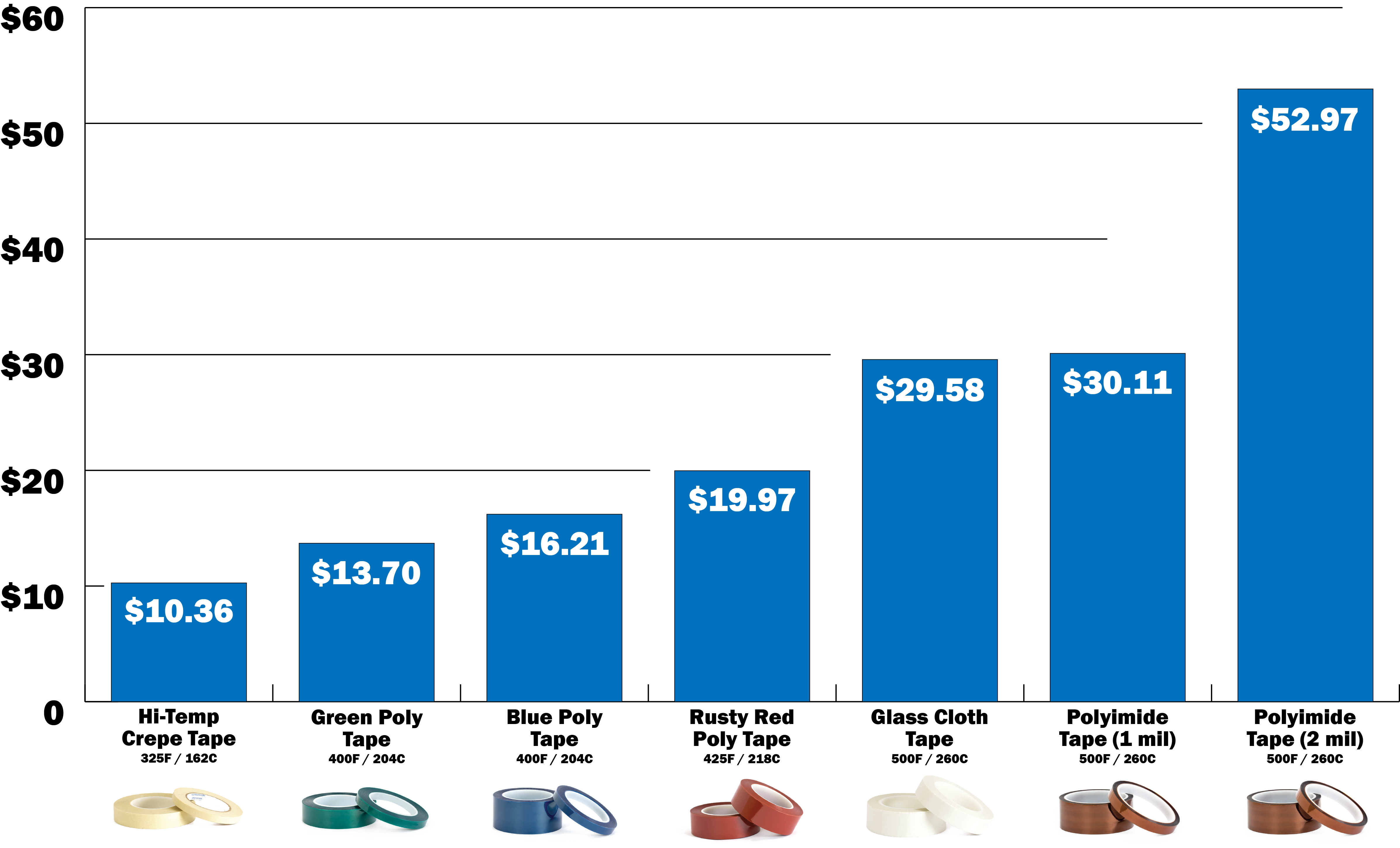

*Glass Cloth and Polyimide (1mil & 2mil) tapes come in rolls of 36 yds, while the other options mentioned above are 72 yds
Below is a general comparison of the different types of high temperature masking tapes when purchased at low volume (1 roll). Pricing is subject to change, but this chart should could you a general idea of the pricing difference there is between each type of industrial tape.
Factors To Consider When Choosing Which Tape To Go With
- Temperature: How hot are you running and how long do the parts stay in the oven? (350F vs. 500F is a big difference)
- Application: Will the tape be used for a fairly flat surface or is it curved, requiring a tape that will conform to it?
- Coating Process: Are you powder coating, e-coating, plating, anodizing, or wet paint all have unique requirements
- Paint thickness: Thick coats require a thicker tape (like Glass cloth)
- Assembly: We suggest getting with your line workers that are applying the tape / removing the tape. A lot of times they'll have a personal preference based on past experiences. A common request we receive is to switch from Green Poly over to Rusty Red Poly because the curing temperature is at a point where green poly is baking onto the part. Rusty red does a much better job in these cases, requiring minimal to no rework
Choosing Between Standard Rolls of Tapes & Custom Die-Cuts
Tapes are more for universal applications where you're able to apply and cut the tape to your specific requirements. Die-cuts, on the other hand, is tailored towards a specific application in order to improve quality and drastically lower installation/removal time. Below are a few more points of when you should
When to Stick with Rolls of Tape
- You're working on a one-off or low volume projects for customers
- Masking long, straight lines
- If timing is a critical issue, and you can't wait for a custom tool to be cut or for plotter samples to arrive
When to Choose Custom Die-Cuts
- Medium to high-volume project
- Your tape application time is taking more than 30 seconds/piece
- Masking surface lines are high-priority for project success
Conclusion
To sum this all up, MRO purchases can be fairly complex when you don't know what questions to ask and your supplier isn't able to properly educate you on what your options are and why you'd go with each one. After this, we hope you're able to take this information and use it to reevaluate your current operations. Is there anywhere that you could lower your total overall costs? What's the average time spent per part being masked?
Echo Engineering has specialized in catalog and custom masking solutions for over 50 years. If you have any questions or want to explore a new quote, feel free to reach out to us anytime by heading over to our contact us page today.



